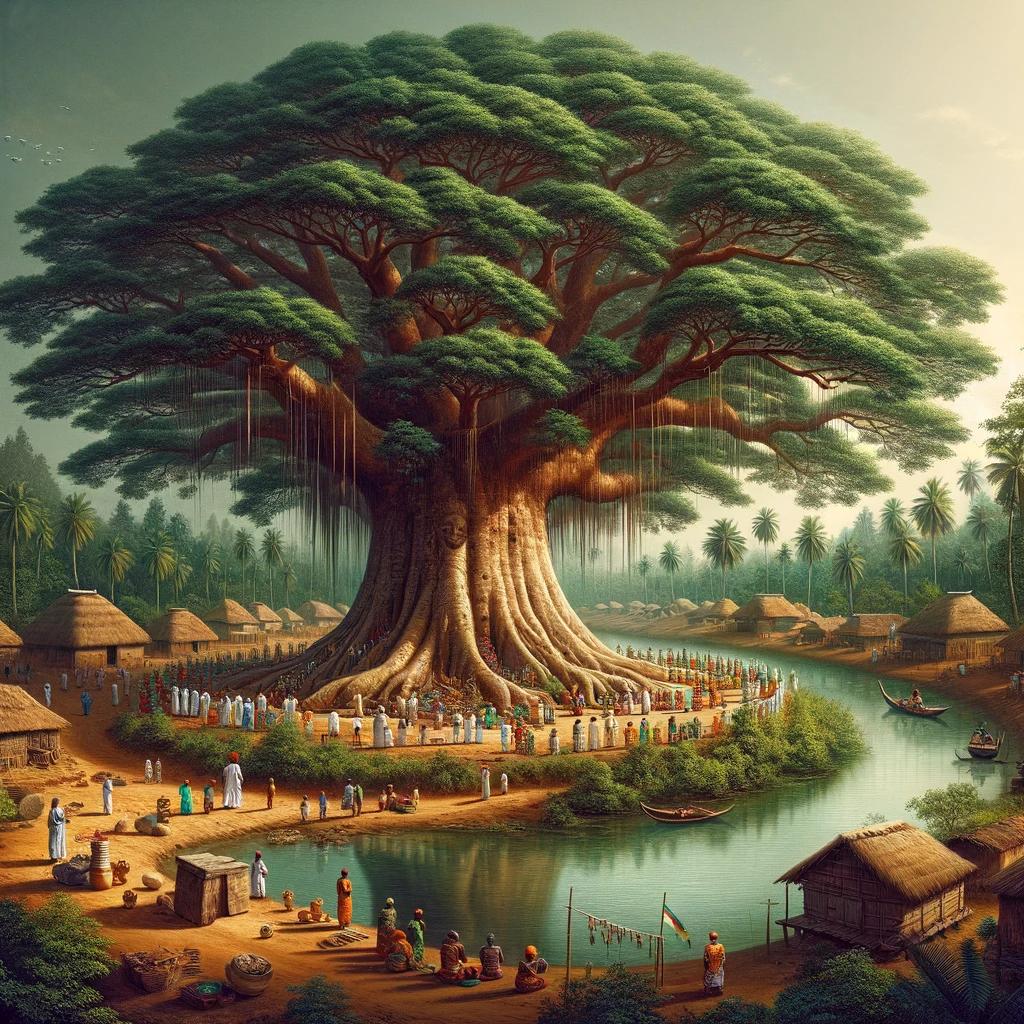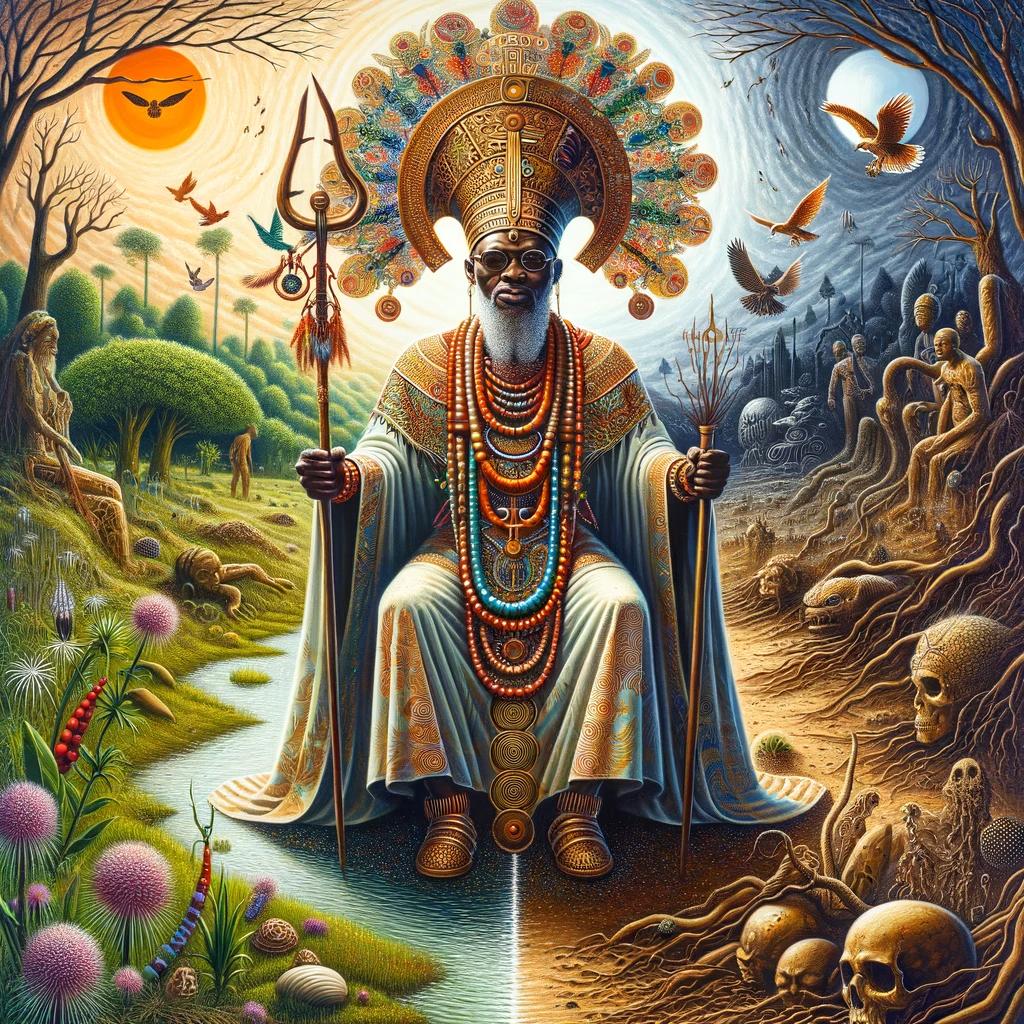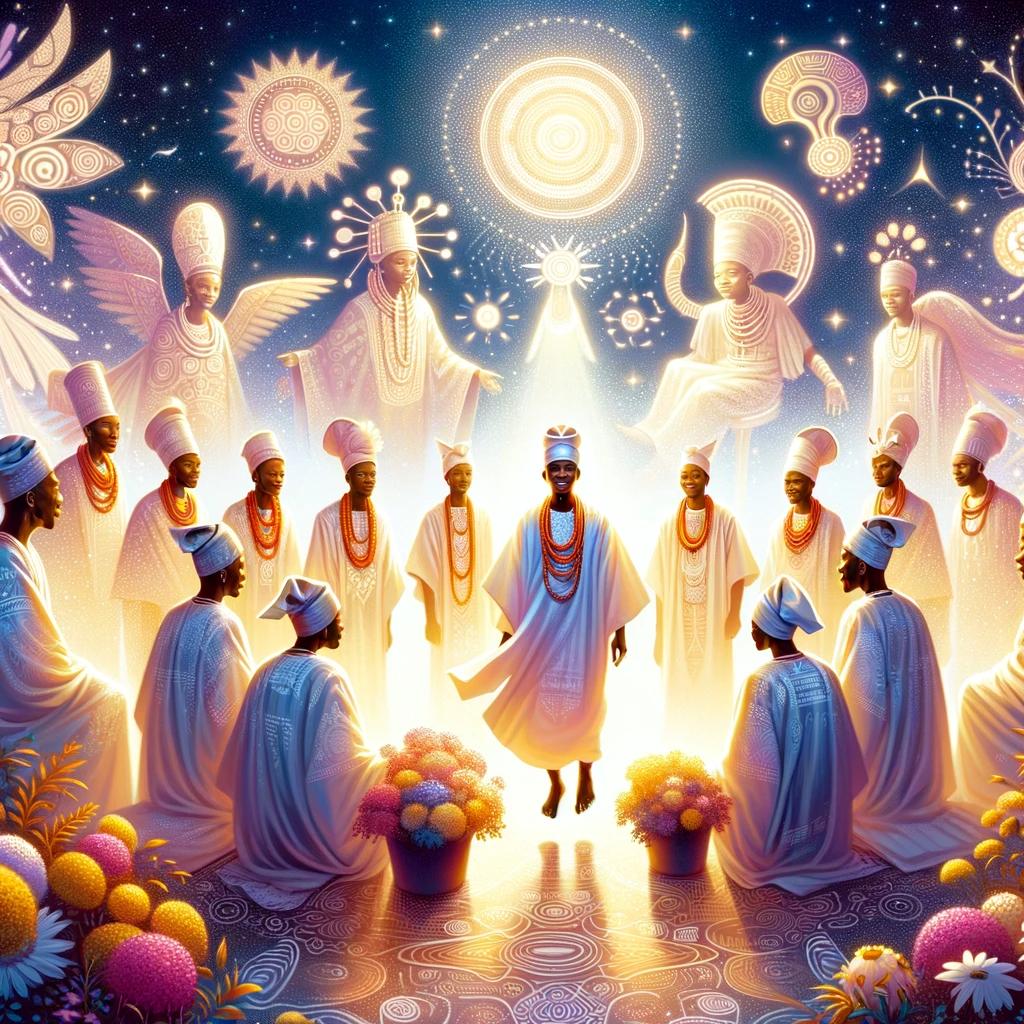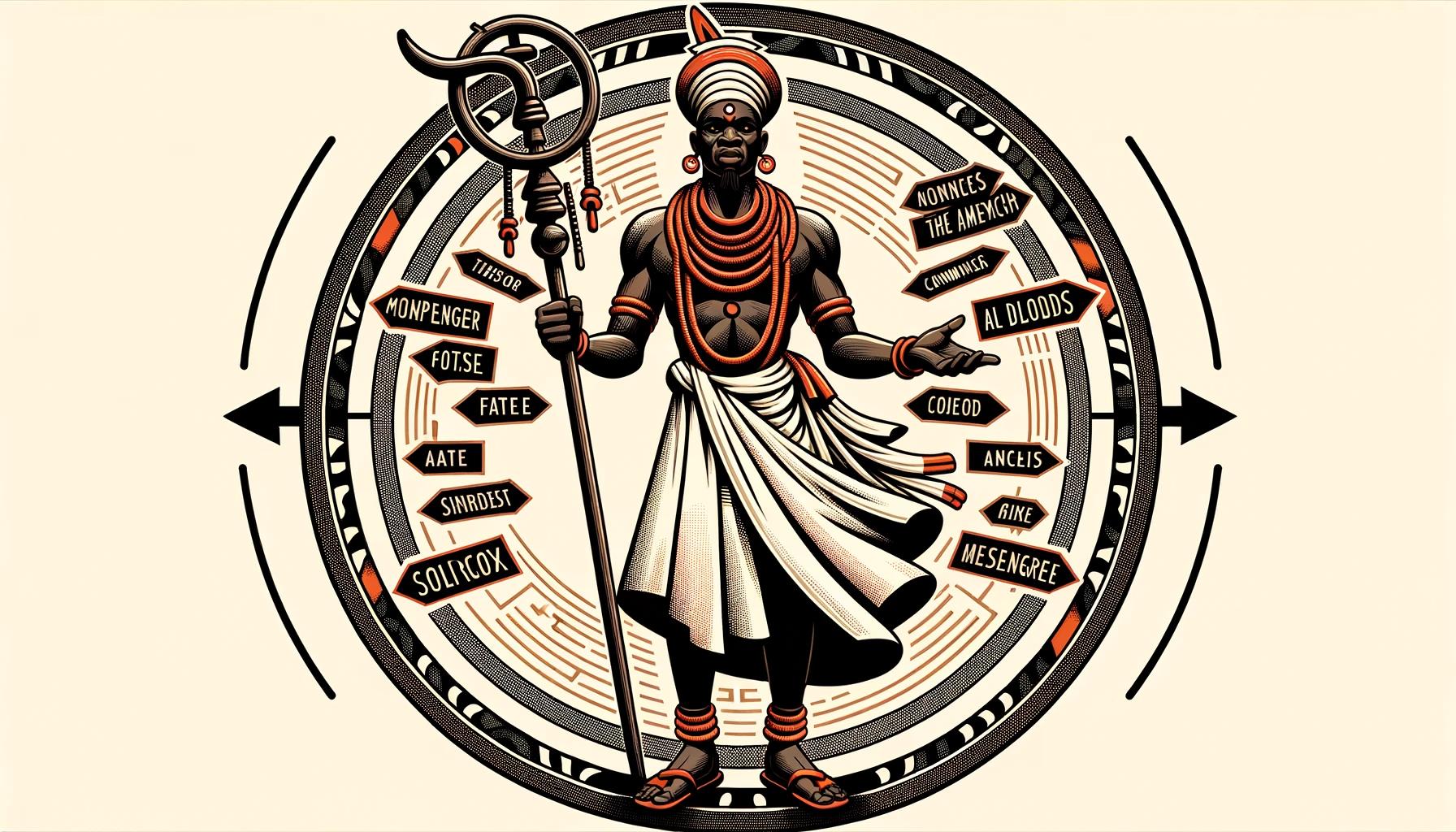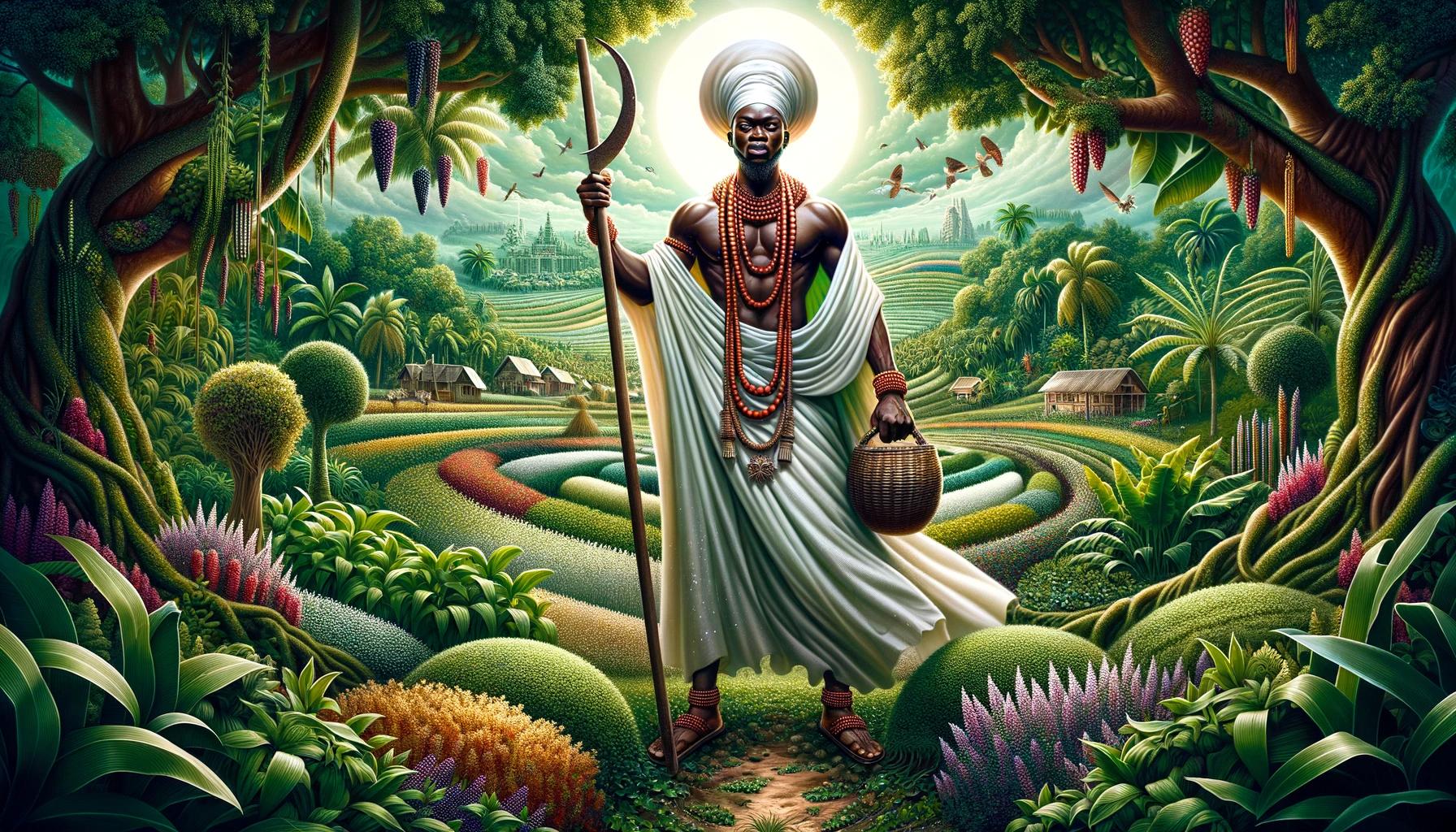The Enigmatic Iroko Tree in Yoruba Culture: A Symbol of Spirituality and Power

The Iroko tree holds great significance in Yoruba culture in Africa. With its dense hardwood and durability, it is widely used in construction and carpentry. However, the Iroko tree is not only valued for its material applications but also cherished for its spiritual and mythical importance.
In Yoruba belief, the tree is believed to house the spirit of Iroko-man, feared for its power. Conservation efforts are crucial due to its ecological and cultural significance. Understanding the Iroko tree’s role in Yoruba culture sheds light on its multifaceted importance.
The Iroko Tree: Description and Characteristics
Physical attributes and appearance
The Iroko tree, scientifically known as Chlorophora excelsa, is a magnificent and towering tree that belongs to the family Moraceae. It is renowned for its impressive size, with heights reaching up to 50 meters and a circumference of about 10 meters.
The tree possesses a straight, cylindrical trunk that supports a large, spreading crown. Its bark is rough and distinctly greyish-brown, providing protection against external threats and harsh weather conditions.
With dense foliage consisting of dark green, glossy leaves, the Iroko tree creates a lush canopy that offers shade and shelter.
The leaves are simple, alternate, and leathery, making them resistant to drying out and damage. The vibrant golden-yellow flowers of the Iroko tree bloom in clusters, adding beauty to its surroundings.
These flowers subsequently give way to small round fruits, which are inconspicuous and not typically utilized.
Habitat and distribution in Africa
The Iroko tree is native to the tropical regions of Africa, thriving in countries such as Nigeria, Ghana, and Cameroon. It has the ability to adapt to a variety of habitats, including lowland rainforests, gallery forests, and moist savannas.
This hardy species can withstand both wet and dry climates, demonstrating its resilience and versatility in different environments.
Importance of the Iroko tree in African communities
The Iroko tree holds immense cultural, economic, and ecological value in African communities. Its dense and durable wood, known for its resistance to decay and insects, has made it a prized resource for construction, furniture, carpentry, and boat-building.
The versatility and stability of Iroko wood have contributed significantly to the development of local economies and industries.
Furthermore, the Iroko tree plays a crucial role in traditional medicine, as various parts of the tree, including its leaves, bark, and roots, are utilized for their medicinal properties.
It is believed to possess healing and protective qualities, treating ailments such as malaria, arthritis, and digestive disorders. The tree’s significance extends beyond its material uses, as it forms an integral part of cultural ceremonies, rituals, and folklore, symbolizing strength, longevity, and connection to ancestral spirits.
In African mythology, the Iroko tree is often associated with spiritual entities and revered as a sacred entity. Its towering presence and long lifespan have led to the belief that the spirits of ancestors reside within its branches, bestowing blessings and guidance upon those who seek it.
The Iroko tree acts as a spiritual conduit, fostering a profound connection between the human realm and the spiritual realm.
Cultural and Spiritual Significance of the Iroko Tree in Yoruba Culture
Within Yoruba culture, the Iroko tree holds profound cultural and spiritual significance.
It is deeply intertwined with the beliefs, myths, rituals, and worship practices of the Yoruba people. Understanding the cultural and spiritual importance of the Iroko tree provides valuable insights into the rich tapestry of Yoruba traditions.
Beliefs and Myths Surrounding the Iroko Tree
The Iroko tree is steeped in various beliefs and myths within Yoruba culture. It is believed to be inhabited by the spirit of Iroko-man, an entity that is both feared and respected.
It is said that encountering the Iroko-man face-to-face can result in madness and swift death. Consequently, the tree is revered and considered dangerous. Legends tell tales of calamities befalling those who cut down an Iroko tree, unless they offer prayers for protection afterwards.
Rituals and Ceremonies Associated with the Iroko Tree
The Iroko tree plays a central role in Yoruba rituals and ceremonies. It serves as a sacred site for various practices, including offerings, prayers, and sacrifices. Yoruba communities gather around the Iroko tree to seek blessings, guidance, and protection from ancestral spirits.
It is considered a vital link between the physical and spiritual realms, and its presence enhances the spiritual atmosphere during significant cultural events.
Spiritual Connection and Worship of the Iroko Tree in Yoruba Culture
For the Yoruba people, the Iroko tree is more than just a physical manifestation.
It embodies a spiritual connection to their ancestors and the divine. The tree is believed to house the spirit of Iroko-man in its crown, which reaches such heights in the sky that it is considered the throne of God.
The spirit of Iroko-man is said to be trapped within the Iroko wood, hence its presence can be sensed in households that utilize Iroko wood in their construction.
- The Iroko tree is considered sacred and worshipped by various African groups such as the Yoruba, Olukomi, and Voodun.
- Legends emphasize that the Iroko tree holds a significant position within the spiritual landscape, connecting humans with divine forces.
- Its worship showcases the importance of nature and the belief that ancestral spirits reside within certain trees.
The cultural and spiritual significance of the Iroko tree in Yoruba culture represents a deep-rooted connection to their history, beliefs, and traditions.
It is a testament to the enduring power of nature in shaping cultural identities and fostering spiritual enlightenment.
Utilization of Iroko Wood
The Iroko tree provides a versatile and valuable resource with numerous applications in various industries. Its strength and durability make it a sought-after timber for construction, carpentry, and other purposes.
Strength and durability of Iroko wood
Iroko wood is known for its exceptional strength and durability, making it highly desirable for structural applications.
It possesses excellent resistance to decay, rot, and insect attack, making it suitable for both indoor and outdoor use. It is often compared to teak wood in terms of its durability and ability to withstand harsh weather conditions.
Applications in construction and carpentry
The robust properties of Iroko wood make it an ideal choice for various construction and carpentry projects. It is frequently used in the construction of bridges, decking, flooring, and outdoor furniture, thanks to its ability to withstand heavy use and exposure to the elements.
Additionally, its attractive grain patterns and golden-brown color enhance its aesthetic appeal, making it a popular choice among designers and craftsmen.
Traditional uses and medicinal properties of Iroko
Beyond its utility in construction and carpentry, Iroko wood holds significance in traditional African medicine. Various parts of the tree, including the bark and leaves, are believed to possess medicinal properties and are utilized in herbal remedies.
The bark is known for its anti-inflammatory and antimicrobial properties, while the leaves are used in the treatment of skin ailments and gastrointestinal issues. It is important to note that the traditional use of Iroko wood for medicinal purposes requires proper knowledge and expertise to ensure safe and effective practices.
Conservation Efforts for the Iroko Tree
Conserving the Iroko tree is of paramount importance due to its ecological, cultural, and medicinal significance. Various threats to the survival of this remarkable tree have necessitated the implementation of conservation initiatives and sustainable practices.
Threats to the Iroko tree’s survival
The Iroko tree faces several challenges that pose a threat to its long-term survival. Deforestation remains one of the primary concerns, as vast areas of tropical forests are cleared for agriculture, logging, and urban development, leading to the loss of Iroko tree habitats.
Illegal logging and unsustainable harvesting practices further exacerbate the degradation of Iroko populations.
Conservation initiatives and preservation measures
To address the critical situation facing the Iroko tree, conservation initiatives have been implemented. These include the establishment of protected areas and national parks to safeguard Iroko tree populations. Reforestation programs play a vital role in restoring degraded habitats and promoting the growth of young Iroko trees.
The enforcement of regulations and laws against illegal logging is also crucial in ensuring the sustainable management of Iroko resources.
Furthermore, partnerships between local communities, governmental organizations, and NGOs have been formed to raise awareness about the importance of conserving the Iroko tree.
These collaborations aim to educate communities on sustainable harvesting practices and the value of preserving their cultural heritage tied to the Iroko tree.
Importance of sustainable practices and awareness
Adopting sustainable practices in the utilization of Iroko wood is essential for the long-term conservation of this iconic tree. Implementing responsible logging techniques, such as selective cutting and reforestation, can help maintain healthy Iroko populations.
Promoting alternative sources of timber and encouraging the use of certified and sustainably sourced wood can alleviate the pressure on Iroko trees.
Increasing public awareness about the Iroko tree’s significance is crucial for its conservation.
Educating local communities, policymakers, and the general public about the ecological and cultural value of the Iroko tree fosters a sense of responsibility and encourages collective action in protecting this valuable resource.
Promoting ecotourism initiatives centered around the Iroko tree provides economic incentives for local communities while raising awareness about the need for conservation.
- Implement protected areas and national parks to safeguard Iroko tree populations
- Initiate reforestation programs to restore degraded habitats
- Enforce regulations and laws against illegal logging
- Form partnerships between communities, organizations, and NGOs
- Promote sustainable harvesting practices and responsible logging techniques
- Encourage the use of certified and sustainably sourced wood
- Public awareness campaigns to educate and foster a sense of responsibility
- Develop ecotourism initiatives to provide economic incentives
Through concerted efforts in conservation, preservation, and awareness, it is possible to ensure the continued existence of the Iroko tree for future generations, preserving both its ecological and cultural importance.
The Iroko tree holds immense cultural and spiritual significance in Yoruba culture in Africa. Revered as a symbol of power and spirituality, it serves as a link between the physical and spiritual realms.
The Iroko tree is deeply ingrained in the traditions, beliefs, and rituals of the Yoruba people. Its towering presence and mythical associations make it a central figure in their cultural identity.
The Yoruba community views the Iroko tree as a sacred entity, believing that ancestral spirits reside within its branches. This spiritual connection leads to the tree being worshipped and revered during ceremonies, festivals, and other important cultural events.
The Iroko tree’s association with the divine places it at the forefront of Yoruba cosmology, representing the connection between humans and the divine realm.
Furthermore, the Iroko tree serves as a source of inspiration for art, literature, and music within Yoruba culture.
Its towering stature and resilient nature exemplify strength and endurance. The intricate carvings and sculptures made from Iroko wood depict cultural stories and ancestral heritage, encapsulating the rich traditions and beliefs associated with this majestic tree.
Future prospects for the conservation of the Iroko tree
As the Iroko tree faces threats from deforestation and unsustainable practices, conservation efforts are crucial to ensure its survival for future generations. Recognizing its ecological, cultural, and economic value, various initiatives have been undertaken to protect and sustain the Iroko tree.
Conservation organizations, governmental bodies, and local communities are working together to raise awareness about the importance of sustainable forestry practices and the need to preserve the natural habitats of the Iroko tree.
Efforts are also focused on establishing protected areas and implementing strict regulations to control illegal logging and ensure responsible timber harvesting.
Furthermore, educational programs and community engagement initiatives are being developed to foster a sense of ownership and appreciation for the Iroko tree among the local population.
By promoting the sustainable use of Iroko wood and encouraging replanting initiatives, these efforts aim to restore and protect the population of Iroko trees in Yoruba communities.
The future prospects for the conservation of the Iroko tree heavily rely on collective efforts, sustainable practices, and increased awareness about its cultural, ecological, and economic significance.
By valuing the Iroko tree as an integral part of Yoruba culture and embracing sustainable conservation strategies, we can ensure that this iconic tree continues to thrive for generations to come.
.











